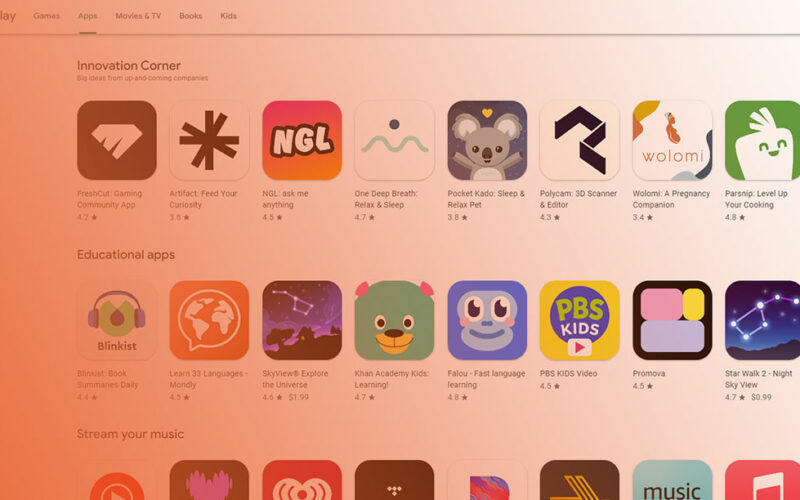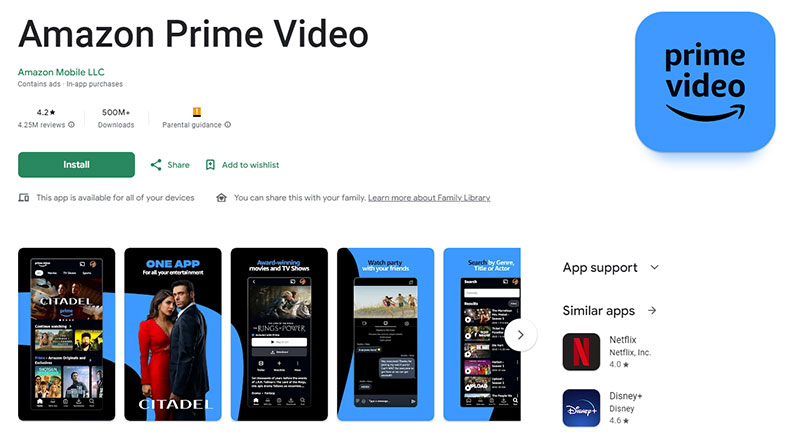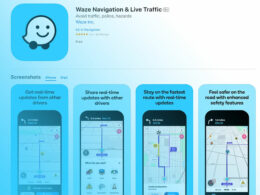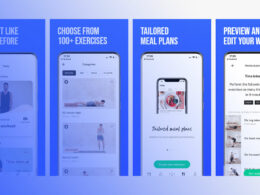Google Play Store’s Ranking Algorithm Explained

Imagine unlocking the secrets to a top spot in the world’s largest app marketplace. Every developer yearns for that prime real estate within the Google Play Store, right? An optimal Google Play Store ranking algorithm. That’s the golden ticket.
Here’s the scoop. The arena’s crowded, and standing out is about mastering the subtleties of a complex, somewhat mysterious system. But hey, it’s not magic; it’s know-how.
Dive deep with me, and by the time you hit the bottom of this article, you’ll be loaded with actionable insights into app optimization and the finesses of user engagement, ready to climb those ranks like a pro.
We’ll navigate the nuances of download velocity, dissect user retention rates, and why the tidbits like metadata can pack a powerful punch. Conversion Rate Optimization isn’t just jargon; it’s your new best friend.
And yes, we’ll even touch upon ensuring that app visibility techniques and quality signals are spot-on.
Hop on board. It’s time to ride the algorithm wave to the top. Let’s make your app the one that everyone’s talking about.
Google Play Ranking Factors For Android Apps
| Ranking Factor | Description |
|---|---|
| App Quality | Google prioritizes high-quality apps with low crash rates, quick load times, and smooth operation across a range of devices. |
| User Engagement | Metrics such as daily and monthly active users, retention rates, and session lengths influence rankings, favoring highly engaged user bases. |
| User Reviews and Ratings | Positive reviews and high ratings signal app satisfaction, significantly affecting app visibility and ranking. |
| Download and Installation Numbers | Apps with higher download and installation numbers are seen as more popular, improving their ranking. |
| App Updates | Regularly updated apps, which reflect ongoing maintenance and improvements, are favored in rankings. |
| Localization | Apps that offer localized content and metadata, including translations for app descriptions, titles, and keywords, can rank higher in those regions. |
| Keyword Relevance | Relevant and well-placed keywords in the app title, description, and metadata help in matching user searches, improving app discoverability. |
| App Uninstalls | A high uninstall rate can negatively affect an app’s ranking, as it may indicate issues with app quality or user satisfaction. |
| In-App Purchases | The performance of in-app purchases, including their popularity and revenue generated, can influence rankings. |
| App Size | Smaller, more optimized apps can rank better, especially in regions with network bandwidth limitations or device storage constraints. |
| Accessibility Features | Apps that include features to improve accessibility for users with disabilities may receive a ranking boost. |
Understanding the Google Play Store’s Ranking Algorithm
You’ve probably wondered how some apps shoot up like stars, snagging top spots in the Play Store, while others kinda just… float in the abyss, right?
Well, it’s not all up to chance. There’s a brain behind it all, the Google Play Store ranking algorithm. Let’s get into the guts of what makes this brain tick.
Key Components of the Algorithm
App Relevance and Keywords
First up, app relevance. Think of your app like a puzzle piece. It needs to fit just right into what folks are searching for.
Makes sense? That’s where keywords come in. They’re like the signals you send to the Play Store saying, “Hey, my app belongs here!”
It’s about finding that cozy spot between what your app does and the words people use to find apps like yours.
User Engagement and Retention Rates

Moving on, user engagement. Not only do people need to download your app, but they also gotta use it. Like, a lot.
Otherwise, it’s kind of like throwing a party and having everyone bail without even trying the snacks.
And guess what? The party ain’t over. After they’ve hung out for a while, you want them to stick around—that’s retention.
If they ghost after day one, it’s a bad look. So keep them coming back for more.
App Quality and Performance Metrics
Yup, quality is queen. If your app keeps crashing, saying goodbye to those 5-star dreams.
The Google Play Store ranking algorithm is pretty smart. It notices these hiccups.
Make sure your app is smooth, fast, and a treat to use. That’s the performance metric part—think of it as your app’s report card.
Changes and Updates in the Algorithm
Historical Evolution of the Ranking Algorithm
Flashback to the old days, and it was all about downloads and basic stats.
But now?
The Google Play Store ranking algorithm has grown sophisticated. It’s learned from the past, taking notes on what works and what doesn’t to pair users with the best apps out there.
Recent Updates and Their Impact on App Ranking
And oh boy, does it like to keep us on our toes with updates. The algorithm is like a living thing, always evolving.
Each update shakes things up, changing the game on what it takes for apps to rank well.
It means you gotta adapt, tune into the new vibes, and make sure your app is hitting all the right notes with what the algorithm’s digging now.
Deep Dive into App Store Optimization (ASO) for Google Play

Ever wondered how some apps just pop in the Play Store, like finding a lit song in a mountain of tracks? It’s all about that sweet spot of App Store Optimization (ASO).
Let’s break it down, piece by piece.
Importance of Comprehensive App Store Listings
You gotta think of your app store listing like your app’s resume; it’s what gets your foot in the door.
Role of App Title and its Optimization Strategies
First up, the title. It’s the handshake. It’s gotta be firm, confident, and memorable.
Load it with a keyword or two that resonate with what your app’s about, but keep it smooth, catchy. Remember, it’s gotta vibe with the Google Play Store ranking algorithm.
Crafting Effective App Descriptions with SEO in Mind
Next, the app description. This is your pitch. Why should someone download your masterpiece?
Pull them in with a story, add a splash of personality. Sprinkle those SEO goodies – keywords that flow naturally. Like adding spices to a stew, they should enhance, not overpower.
The Significance of Promo Text and Keywords
Got promo text? Use it as your hook. Pack it with punchy, keyword-rich phrases that give a snapshot of your app’s awesomeness.
Advanced Keyword Strategies
Alright, buckle down for the juicy part. Keywords are the main cast of your ASO show, so you gotta cast them right.
Researching and Selecting Effective Keywords
Dig deep. Find the words that peeps are actually using to look for apps like yours. Tools? Yeah, plenty are out there.
Use them to sift out those golden keywords that could lift your app high in rankings.
Avoiding Keyword Stuffing and Spamming
Now, don’t just stuff ’em in like a Thanksgiving turkey. That’s spammy, friend, and no one likes that.
It’s gotta be organic, make sense in your app’s story.
Long-tail vs. Short-tail Keywords: When and How to Use Them
Mix it up with long-tail and short-tail keywords. Long-tail are like fishing with a net – wider, but less competition.
Short-tail? That’s fishing with a spear, aiming for those big popular targets.
Visual Elements and Their Impact on Rankings

Vision is king. The visuals in your listing aren’t just pretty pictures; they’re your first impression.
Importance of App Icons, Screenshots, and Graphics
Icons and screenshots are your window display. They need to stop thumbs in their tracks, make eyes wide, and intrigue minds.
Apps with slick icons and graphics tend to play nicer with the Google Play Store ranking algorithm, see?
Best Practices for Creating Compelling Visual Content
Keep it simple, keep it bold, and keep it relevant. Show the coolest parts of your app in action shots.
It’s like choosing the best scenes of a trailer for your blockbuster app. Gotta make ’em count, make ’em shine. That’s how you get those downloads raining in.
Maximizing User Engagement and Retention

Let’s face it, keeping users hooked is like trying to keep a cat entertained – it demands constant awe.
That’s where the real game is at, beyond the launch day fireworks.
The Role of User Experience in Rankings
User experience, or UX, is the bread and butter of how users feel about your app.
It’s like hosting a house party: you want everyone to have such a blast that they keep coming back for more, right?
Importance of User Feedback and Ratings
Feedback and ratings? Pure gold. They’re the crowd’s honest voice about your party.
When the ratings soar high, the Google Play Store ranking algorithm notices and thinks, “Hey, this must be the place to be!”
Strategies for Encouraging Positive Reviews
So, how do you get the good vibes flowing in the reviews? Make it easy for users to leave their thoughts, like a gentle nudge after a smooth experience.
It’s like handing out free samples – people love to share their thoughts when they’re delighted.
Addressing Negative Feedback Constructively
Got a couple of haters or a bad day in the app world? Happens to the best of us. The trick is to listen and flip that script.
Respond with grace, fix what’s broken, and show you’re all about making things right. People dig that.
Enhancing App Performance for Better User Retention
Great, now you’ve got them in the door, but the real hustle? Keeping them from bouncing.
It’s about making every moment in the app feel like time well spent.
Technical Aspects: Load Times, Crash Rates, and Updates
Think about load times and crash rates like this: if your app is a ride, it better be smooth and fast – no one likes a bumpy road with long queues.
Regular updates? They’re like renovations to keep things fresh and exciting. The Google Play Store ranking algorithm smiles upon those who keep their house in tip-top shape.
Content Updates and Feature Enhancements
And don’t forget to stir the pot regularly with new content and features. It’s the “new new” that keeps people talking and coming back.
Like the seasons, change can bring out the beauty, something new to fall in love with all over again. Keep it flowing, keep it glowing.
Localizing Your App for Global Reach
Picture this: your app, a globe-trotter, landing in the palms of psyched users, oceans away.
Fancy, right? Let’s yarn about flipping your local hit into a worldwide chart-topper.
The Benefits of App Localization
It’s not just about talking the talk; it’s about walking it, every step, in shoes borrowed from locals.
Localization is your passport to global app markets, and the Google Play Store ranking algorithm gives extra points for speaking the local lingo.
Increased Visibility in Global Markets
Getting your app out there, in every corner of the world, that’s the dream.
By tailoring it to each place’s vibe, you’re rolling out a red carpet for new users to walk on over. Think of it as customizing your app’s outfit for every party it’s invited to.
Cultural Sensitivity and User Experience
It’s a big world out there, full of different beats and treats. And here’s the thing – respect is key.
When your app shows it gets the local scene, folks feel heard and seen. That’s primo UX right there.
Implementing Effective Localization Strategies
Okay, so you’re convinced. Let’s switch that small-town feel for some global appeal.
Language Translation and Local Customs
Start with the words; they’re the heart-throb of any convo. Get them in the right dialect and tuned to local customs.
It’s more than grammar; it’s grabbing the right sentiment that makes the locals nod and smile.
Adapting Visual Elements for Different Cultures
Next up, looks – from icons to screenshots, they gotta tell the local tale. Each graphic should be like a handshake, familiar and friendly as per the local style.
So go on, tweak those visuals, make them a love letter to every culture your app touches. Watch as your app turns from hometown hero to global legend.
Building and Maintaining High-Quality Backlinks
So, picture this: your app is like a new café. But how do folks know it’s the place to be? Word spreads when others point your way.
In the digital world, that’s what backlinks are all about – they’re the streets that lead to your app.
Importance of Backlinks in Google Play SEO
It’s like getting nods from the cool crowd; backlinks can give your app a little swagger in the eyes of the Google Play Store ranking algorithm.
How Backlinks Influence Rankings
When legit sites link to your app, they’re kind of saying, “This one’s a keeper.”
It’s like a thumbs-up for your app, telling the Google Play Store ranking algorithm you’ve got street cred.
Distinguishing Between High and Low-Quality Backlinks
But not all backlinks are created equal. Some are ritzy, others not so much. High-quality backlinks are like recommendations from the VIPs – think industry blogs or news sites.
The shabby ones? They’re like that one random person at the party no one really knows – they don’t boost your cred much.
Strategies for Acquiring Quality Backlinks
Ready to get your app the links it deserves? Roll up those sleeves, we’re going in.
Content Marketing and Guest Blogging
One word – content. Make it snappy, useful, shareworthy. Guest blogging on well-known sites? It’s a yes from me.
It’s like being the guest DJ at a top club; you get the exposure, and they get your cool tunes.
Collaborations and Partnerships with Influencers
Now, team up. Find influencers who dig your app’s vibe and can give you a shoutout. They’re like the friends who bring the party to life.
A genuine plug from them can turn into a sweet backlink that the Google Play Store ranking algorithm will notice.
Monitoring and Updating Your SEO Strategy
Alright, let’s talk about keeping your app’s game sharp. You know how you check your bike’s tires and gears before a ride?
That’s pretty much what monitoring your app’s performance is like. It helps you glide smooth, no bumps.
Tools and Techniques for Tracking App Performance
We’ve got some slick tools to stay on top of things. No guesswork here – it’s all about the real intel on how your app’s doing.
Utilizing Google Play Console and Other Analytics Tools
Start with the Google Play Console. It’s like mission control for your app. Dive into the numbers, see what’s clicking, what’s sticking.
Or, branch out. There’s a toolbox full of analytics gadgets to snoop on your app’s stats.
Interpreting Data for Informed Decision Making
So, you’ve got stats, now what? Read ’em like a treasure map. They tell you where the X marks the spot for success and where there be monsters—or bugs.
Those insights? They’re your compass to steer by.
Adapting to Market Changes and Algorithm Updates
The app world’s got more twists than a pretzel factory. Stay limber, stay alert. You gotta zig when the market zigs.
Keeping Up with Industry Trends and Best Practices
Have an ear to the ground. Industry trends, the latest whispers about the Google Play Store ranking algorithm – it’s like picking up tricks from the pros. They’re your playbook for staying ahead of the game.
Regularly Reviewing and Updating ASO Strategies
Circle back to your ASO strategy like you’re checking in with an old friend. Give it a shake, see if it needs a refresh.
The algorithm loves a good surprise – keeps it on its toes, keeps your app on its radar. Keep your tactics as fresh as your app, and you’ll watch those rankings climb.
FAQ On Google Play Store Ranking Algorithm
How does the Google Play Store ranking algorithm work?
Think of it like a talent show where apps strut their stuff. The Google Play algorithm is the judge, constantly checking out things like user engagement, app quality, and relevance.
It loves apps that keep users coming back and those that nail the right keywords.
What factors influence my app’s ranking in the Google Play Store?
Your app’s ranking swings with a mix of ingredients: download rates, user reviews, and retention are the headliners. Other rockstars include proper app optimization and how often you update. Keep these elements tight and right; you could climb the charts.
Can improving my app’s description affect its Google Play Store ranking?
Absolutely! Your app’s description is prime real estate. Stuff it with clear, compelling text and those LSI keywords that fit snugly around what your app is about. This isn’t just window dressing; it’s a compelling invite to users and a nudge to the Google Play Store ranking algorithm.
How do user reviews and ratings impact my app’s visibility?
They’re huge! Think like a diner; the joint with the most stars and raves gets your foot in the door. Same deal here. The algorithm digs apps with stellar reviews and ratings – it’s the crowd-sourced thumbs-up that shouts “quality” and “user trust.”
How often does the Google Play Store ranking algorithm update?
The algorithm is kind of mysterious, keeping its cards close. Doesn’t exactly send out save-the-dates for its updates. But it evolves, tweaks here and there, with major changes coming now and then. Stay alert to these shifts; they can shuffle the app ranking deck big time.
How important is the app’s title for its ranking?
The app title’s your first impression, so make it count. It’s got to be catchy, yeah, but also packed with a keyword that’s a magnet for your target audience. A killer title can sway the algorithm in your favor by aligning with what people are searching for.
Does localizing my app improve its ranking in different regions?
Spot on! Sprinkle your app with a little local flavor – localization is key! Localizing means better user experience for non-English speakers or different cultural contexts and catches the eye of the Google Play Store ranking algorithm in various regions.
How do backlinks to my app affect its Google Play Store ranking?
Think of backlinks as streets leading to your app. The more reputable those streets, the more likely users will find you. High-quality backlinks from respected sources signal to the Google Play Store ranking algorithm that your app’s got street cred, polishing your ranking shine.
What role does app performance play in ranking?
Performance is a big-league player. A slick, bug-free experience keeps users happy and hangin’ around. If your app’s smooth, fast, and friendly, the algorithm’s going to be all over it because, well, that’s what users want too, and user satisfaction is the end game.
How can ASO tools help improve my app’s ranking?
ASO tools are like your behind-the-scenes crew. They help nail down the right keywords, track your rankings, and spy on competition. With their insights, you can tweak your app’s ASO strategy to be more in tune with what the Google Play Store ranking algorithm is listening for.
Conclusion
Wrangling the Google Play Store ranking algorithm isn’t just about crossing fingers and wishing on app stars. It’s a cocktail of savvy ASO strategies, a dollop of user engagement, and a sprinkle of high-quality backlinks to whip up the perfect storm.
- Keywords? Check.
- App quality? Got it.
- Kickass visuals? Oh yeah.
It’s about staying ahead, keeping tabs on nuances, and being ready to pivot when the algorithm shifts, like a seasoned surfer waiting for the next big wave. The ride doesn’t end at launch. It’s an endless game of finesse and tune-up, where monitoring and adaptability are your best pals.
So, there you have it. Tame that Google Play Store ranking algorithm with a mix of technical know-how, a knack for killer user experiences, and a relentless drive to evolve. The top of the charts isn’t just a dream—it’s where your app belongs.
If you liked this article about the Google Play store ranking algorithm, you should check out this article about app subtitles.
There are also similar articles discussing mobile apps KPIs, Android app store optimization, app store ranking algorithm, and ASO A/B testing.
And let’s not forget about articles on app store keyword search volume, app keyword research, game ASO, and Google Play store screenshot sizes.
- Top 7 Ways Outsourcing eCommerce Customer Service Can Increase Your Sales - May 5, 2024
- Animate with Ease: Top CSS Animation Libraries Today - May 5, 2024
- Golang’s Growing Use: What is Golang Used For? - May 5, 2024








